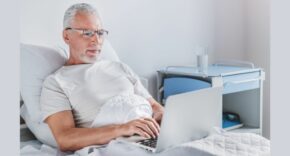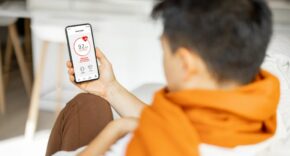
By Bipin Bhaskar, Client Partner, Digital Engineering, Persistent Systems
Digital technology and modern healthcare have, in recent years, become two sides of the same coin. From basic monitoring of day-to-day health through wearable lifestyle devices, to something as complex as delivering an organ for transplant to a remote location via a drone, technology is becoming intrinsically linked to maintaining our health.
All these technologies have one thing in common – they would be nothing without patient data. Patient data, which at the moment, remains notoriously difficult to access within healthcare data silos.
Not only is patient data difficult to access, but the data on-file is often an incomplete picture of someone’s wellbeing. Many indicators of a patient’s lifestyle and health, such as diet and exercise, remain unrecorded. All of this information is key to creating an accurate image of someone’s physiology.
Now, imagine a world where all this patient data could not only be gathered, stored, and accessed with ease but could also be used to create a digital portrait of a person’s physiology. Enter the digital twin.
Digital twin technology allows medical practitioners to create a patient’s digital avatar, enabling a 360-view of a patient –using data from previous treatments tests, and general healthcare – resulting in a heightened understanding of their needs based on their own unique data.
Digital twins in healthcare
As well as digital twin technology enabling clinicians to create a digital portrait of someone allowing for an in-depth, comprehensive view of an individual’s medical make-up, the concept can be pushed even further through regular biofeedback from smartphone health apps, for example. This real-time data source would allow continual updates the digital avatar, granting access to real-time monitoring of a patient’s condition.
However revolutionary this technology may seem, the phenomenon of the digital twin is not a recent discovery. Digital twins have been used outside of the healthcare industry for more than 50 years. Engineers have often created digital equivalents of machines on-screen, allowing them to conduct research and tests on a mock-up instead of the real thing.
The ability to apply this technology to healthcare was soon realised; if it is possible to twin a machine, what’s to stop someone from digitally twinning aspects of the human body? There is an ongoing level of extensive research into digital twins and the potential for better healthcare for example, using a digital twin to create specifically tailored treatment plans based on someone’s individual needs.
Patient care reimagined – personalised pharmaceuticals and preventative care
Digital twins would provide the opportunity for life-changing healthcare. With access to a patient’s digital twin, researchers would have the ability to investigate the effects of diseases, medical devices, and drugs on a patient without even having to interact with them in person.
Pharmaceuticals would also benefit hugely from this technology – greater, more in-depth insights from people’s digital avatars would be invaluable when developing new treatments and would allow them to enter the market quickly, whilst remaining safe and cost-effective.
While still in the early stages of development, another breakthrough in this technology could be seen through the development of personalised pharmaceuticals. Creating a drug that is tailored specifically for an individual could create huge leaps in medical treatment. For example, in oncology, having a personalised medicine to someone’s own genetic makeup may help to alleviate some of the side effects that accompany cancer treatments.
The prevalence of preventative care would also increase as a result of digital twin technology, the need for invasive treatments, such as operations or chemotherapy, could be reduced as medical problems may be detected and managed before the need for more intensive treatments.
Digital twin data must be secure
One of the biggest concerns surrounding data and technology is, understandably, security. Confidential patient data needs to be stored safely, whilst remaining easily accessible for authorised professionals.
Privacy concerns are valid. And these concerns don’t just involve hospital databases – it extends as far as needing to secure the wearables (fitness trackers and smartwatches), and possibly even implanted medical devices such as pacemakers and insulin pumps.
It is therefore vital to keep privacy at the forefront of the conversation, especially when talking about digital technology in healthcare. Robust security procedures are essential to ensure effective cybersecurity and patient confidentiality.
Other challenges
A longstanding issue within the healthcare industry is that many hospitals and healthcare organisations operate on entirely different platforms and these platforms often store information in silos – making data-sharing a real challenge.
The success of digital twins in healthcare will rely on providers ditching legacy systems and championing these digital avatars – focusing on getting them updated with comprehensive insights. This will require information to be regularly shared to maintain the avatars to ensure they remain relevant and helpful.
Luckily, calls for change from within the healthcare sector are becoming louder – these professionals understand the benefits of data sharing in healthcare. By collating a patient’s existing clinical data and combining this with real-time information, healthcare will transform from treating existing conditions to identifying and preventing them from occurring in the first place. Not only will this revolutionise patient care, but it will also help to relieve current pressures on healthcare organisations. If innovative technology and proper data management can achieve all of that, then it must be something worth investing in.












